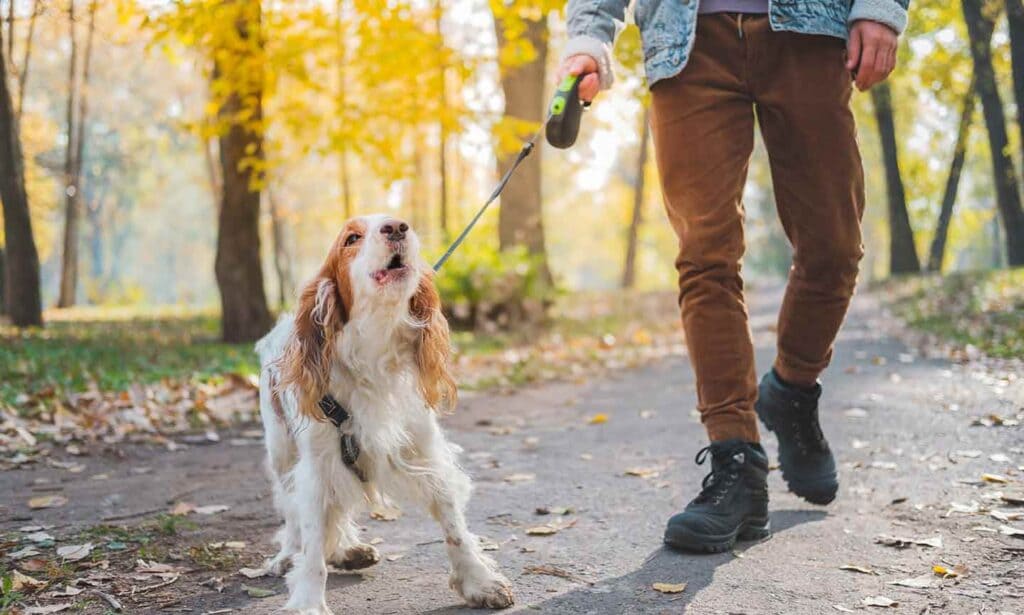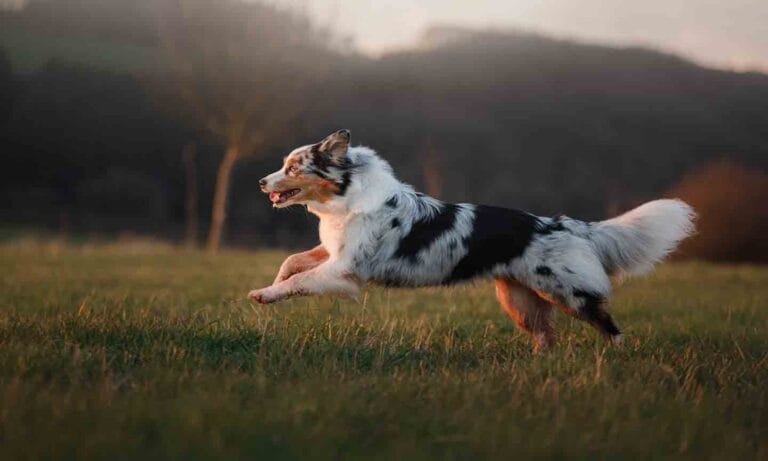Does your dog bark at strangers or overreact to other dogs on your daily walk? You may have a reactive dog. While some dog owners may try to alter their dog’s reactive behavior through domination or physical punishment, positive reinforcement usually works much better.
We spoke with Dr. Katherine A. Houpt, a veterinarian and veterinary behaviorist in Ithaca, New York, to discuss dog training tips for your reactive pet. Houpt has a long history in the field of animal behavior issues. When she graduated in 1963, she was one of the first women veterinarians and wrote the book on animal behavior—literally. Her textbook, "Domestic Animal Behavior for Veterinarians and Animal Scientists," is soon to be in its seventh edition.
In This Guide
What is a Reactive Dog?
So, how exactly do we define a reactive dog? According to Houpt, a reactive dog is one who overreacts to situations a typical dog might ignore. That overreaction commonly takes the form of barking hysterically, pulling on their leash, or lunging at another dog or person.
How does a dog become reactive? Houpt says it primarily comes down to nurture. Some dogs have had bad experiences that cause them to overreact in certain situations. For example, if you’ve adopted a rescue dog who was rescued from an abusive owner, it’s understandable your dog would be scared when a stranger approaches on your daily walk. For other dogs, a lack of socialization is to blame. This occurs when a dog isn’t routinely exposed to new, positive experiences in a safe and stress-free way, so they learn not to trust new pets, places and people.
Does a dog’s breed matter? Not really. Reactivity typically has very little to do with a dog’s breed, and much more to do with their history and experiences. Any dog of any breed can become reactive if they have had a traumatic experience, and many so-called “reactive breed” dogs show no signs of reactivity if they are properly raised and socialized.
However, Houpt says research indicates that some types of dogs tend to be more reactive than others. Smaller dogs, for example, might be more prone to reactivity because everyone around them is so large, which may be frightening for them. That doesn’t mean every Chihuahua will bark uncontrollably—again, it’s all about nurture—but it may increase the likelihood.
Are you looking for a dog breed less prone to reactive behavior? Houpt recommends:
However, keep in mind that any dog can become reactive, including the breeds above.

How to Calm a Reactive Dog
Let’s say your dog reacts to another dog when you’re on your nightly walk. How do you help them calm down in the moment? Houpt recommends these training techniques:
1Spot the trigger.
If possible, see if you can notice your dog’s trigger beforehand. In this case, it’s the other dog walking towards you. Houpt notes that in some circumstances, you can see better than your dog, so if your dog reacts aggressively toward other pets, be on the lookout for other pups getting ready to come into your area.
2Try a treat.
When the other dog is approaching, work on counter conditioning, aka teaching your dog that good things happen when their trigger is around. Start by giving your dog a treat. Now, you’re taking this scary thing (the other dog) and creating a positive association (with a delicious treat). Ensure you’re giving your dog the reward safely, away from the trigger. This will help keep your dog calm. It also helps them learn the other dog is not a threat to them.
3Remove your dog.
Once you’ve rewarded your dog, turn them away from their trigger. Move your dog in another direction so they’re not facing the other dog and are out of the line of sight. Even if you don’t have dog treats, this is also a good solution when your dog has a reactive episode. When in doubt, remove them from the situation to help them calm down.
Tips for Training a Reactive Dog
There’s plenty you can do to help your dog overcome their reactivity in their calmer moments, too. Here are some tips for training your reactive dog to be better behaved.
Teach your dog to look at you.
Training your dog to look at you on command can be helpful. That way, you can help them redirect when you see a dog or another person approaching. You can do this by holding out something they want, such as a high-value treat. When your dog makes eye contact, you say “look” and give them the treat. With time and practice, your dog will look at you when they hear the word “look.” Being able to reliably get your dog’s attention can help you stop a reactive episode from happening.
Practice the “heel” command.
When your dog is barking or lunging at another dog, it can be challenging to get them under control. But a strong understanding of the “heel” command can help your dog return to a position by your side (without being yanked back by you). Practicing this during calm moments may help them be more cooperative when you tell them to heel during an episode of dog reactivity. Find out how to teach your dog to heel.
Work with another dog parent.
Houpt recommends working with a fellow dog parent to safely expose your dog to other pets. If your dog constantly barks at other dogs on walks, ask a friend to walk their dog around the block and meet up with you. You can practice rewarding your dog with a treat during the training session as you spot the other doggy, leaving a safe distance between you. This often works well because if your dog reacts by barking up a storm, your friend won’t try to approach or interact with your dog. Learn more about how to introduce dogs.
Consult the experts.
If you’re not making headway with your pup, it might be time to call in the pros. Certified professional dog trainers can create a training plan to teach both you and your dog better ways of behaving. Here’s how to find the perfect dog trainer for your pup.
If dog training isn’t working, it may be time to call your vet. Medications can help your dog feel more at ease if behavior modification alone isn’t effective.
How to Socialize a Reactive Dog
Even a reactive dog needs socialization—in fact, you could argue that they need it most of all. Here are some things to remember as you introduce your dog to other people, places and pets.
Discover their triggers.
Many dogs react to other dogs, but some dogs will respond to people. As strange as it sounds, some dogs bark hysterically at men or people of color. How do you avoid this? Work on socializing your dog as early as possible. Exposing them to lots of new people, pets and experiences in a stress-free way teaches them that they don’t have to be afraid of new things, and it’s easiest to do when they’re puppies. But socialization is a lifelong project, so even adult dogs can benefit from it. Once you know their triggers, begin a process of desensitization, using the counter conditioning method above.
Avoid your dog’s triggers.
While working with your dog on behavior modification can be helpful, you may need to avoid places, pets and people filled with stimuli that send your dog into a frenzy. It’s counterproductive to take a reactive dog into a stressful situation and expect them to be cool, calm and collected. That means you may have to adjust your daily routines as well. “Everyone walks their dog at 5:30 p.m.,” says Houpt, “so walk your dog at 7:30 p.m. even if you have to use a flashlight.” It’s probably best to avoid dog parks, too, at least until your dog views them as positive places.
Be proactive.
Keep your pet on leash and only go for walks in communities that have leash laws. If you do encounter an off-leash dog, distract and remove your dog from the situation immediately, and if necessary tell the other dog’s parent to keep them away from your dog.
Frequently Asked Questions About Reactive Dogs
Q:
How do I stop my dog from growling at other dogs?
Q:
What are the characteristics of dogs with fearful aggression?
Q:
What's the difference between a reactive and an aggressive dog?
Q:
What are the best leashes for reactive dogs?
With training, patience and plenty of love and understanding, many dogs can learn to be less reactive to the things that frighten or frustrate them. Need more dog training tips? We’re breaking down all the basics.
Expert input for this story is provided by: Katherine A. Houpt, VMD, Ph.D., of Cornell University College of Veterinary Medicine in Ithaca, New York.
More Dog Training Tips
Share:












